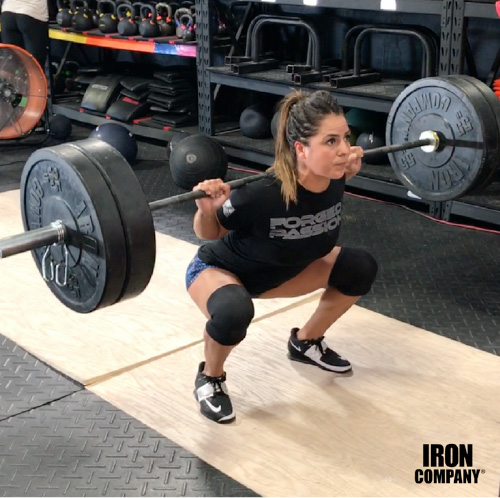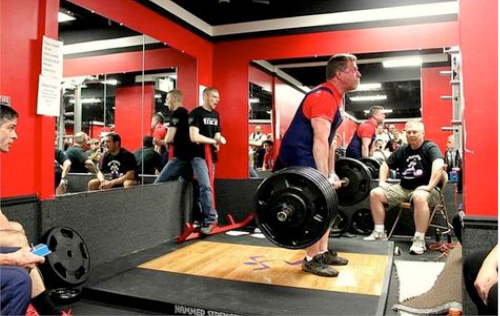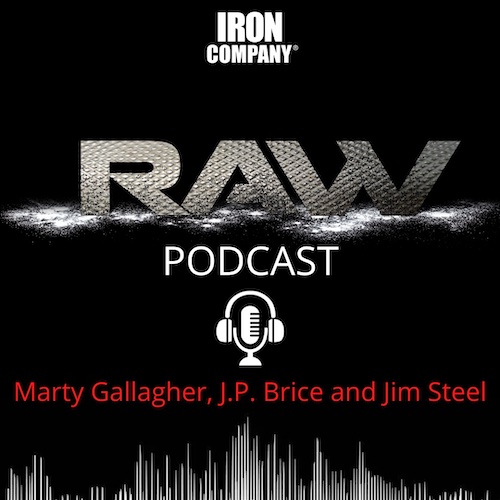
Want More Core Strength? Get to squatting and deadlifting!
Fortunes have been acquired and empires built on the concept of “the core” and how to “build and strengthen the core.” Has any fitness-related topic in recent memory created as much interest or generated as much discussion as “core training?” To me this is strange. Think about it: it is not as if serious fitness types have not been training the muscles of the core all along; I have been knocking the hell out of my core muscles for decades. My core muscles are not weak and do not need strengthening.
Core advocates speak as if they’d discovered some undiscovered constellation of muscles that no one had ever seen or trained. The novelty that set core training apart from the rest of the fitness universe was this idea of viewing a circular sheath of muscles that surround the torso as some sort of unique and contiguous unit, which I suppose in certain instances it is (perhaps pitching a baseball, cutting wood or swing a heavy sledge hammer) but by-in-large we attack herculean physical tasks with the entire body.
Unless you are sitting down when exercising, legs are important if not critical. As the old saying goes, you don’t fire a cannon from a canoe. Exercises that do not directly involve the legs benefit from strong legs. Core exercises done standing benefit from strong quads, hamstrings, glutes and calves. When flexed, the leg and haunch muscles provide rock-solid stability that optimizes performance.
I would define the core as all the muscles of torso from under the arms down to the sex organs, excluding the glutes. Core implies circular and thus would include the pecs, upper middle and lower abs, the jewel-like serratus/intercostal muscles and the side oblique muscles. The back of the core would consist of the lower traps, lats, teres, rhomboids and spinal erectors. The prescription for improving the core seems to be to create a never-ending series of isolation exercises that attack the individual muscles of the core individually or partially.
Books, columns, websites, Facebook pages, articles in major newspapers, tout core training to such a degree I was made to wonder if I was missing the boat. Despite being in hardcore athletics for 40 years I had never heard the term “core” or core training. I certainly missed the core crisis that had apparently been happening right under my nose. I thought I had my ear to the ground insofar as cutting-edge tactics designed to take physique or performance to the next level, but I flat-out missed out on the core revolution.
It was mystifying (to me) to see the emergence and widespread acceptance of the core and core training. The core craze became a bona fide fitness phenomenon. What was equally mystifying was the core-strengthening prescriptions.

Marty Gallagher at age 66 deadlifting over 500 lbs. and has a “bulletproof” core.
There is no report card, insofar as quantifiably improving the core. If you drop your 40-yard dash time from 5.2 to 4.9, that is measurable progress. If you increase your deadlift by 50-pounds, that is measurable progress; dropping 20-pounds of body fat in three months is measurable progress. Improving your core is not measurable. When a thing is not measurable, chaos ensues.
When there is no benchmark, no report card, then all methods and strategies become equal. Measurable things sort things out: what works and what doesn’t work. Fortunes are made in commercial arenas where things are not measurable.
Having said all that, I have a two-exercise prescription/solution that will give you the core you seek. However, there are stringent technical provisos associated with each of these two “core-corrective” exercises.
- Squat
- Deadlift
My premise is that any man with a 300-pound below parallel squat and a 400-pound technically-sound deadlift has all the core strength a man could ask for; and further, were there some sort of core strength report card, I am quite confident that this barbell-inflicted core stress would create core strength far more than all the far more complicated, complex and time-consuming strategies that champion a never-ending barrage of dinky core exercises.
People don’t grok that a proper deadlift is also a reverse sit-up. This “uncoiling” of the torso, encumbered by a limit deadlift poundage, is an optimal core exercise. The sheer poundage handled inflicts a degree of core stress that no plank or balance ball exercise could ever match. If there were objective core benchmarks, deadlifts and squats would trump – but there aren’t, so all strategies are equal and chaos reigns.
The physiological shock inflicted on the muscles of the core by a limit set of barbell squats is unequalled. Mastery of squats and deadlifts not only gives you herculean legs and a powerhouse back, squat-dead mastery means you can optimize core strength without resorting to the “death of a thousand cuts,” the endless stream of exercises that comprises mainstream core training. The gold standard strength benchmarks for men in the squat and deadlift are….
| Squat | Deadlift | |
| Level 1 | 1.5 x bodyweight | 2 x bodyweight |
| Level II | 2 x bodyweight | 2.5 x bodyweight |
| Level III | 2.5 x bodyweight | 3 x bodyweight |
Ergo… a 200-pound man would need to…
| Level I | squat 300-pounds, deadlift 400-pounds |
| Level II | squat 400-pounds, deadlift 500-pounds |
| Level III | squat 500-pounds, deadlift 600-pounds |
All squats are below parallel. Deadlifts are not hitched and pulled to full and complete lockout
Any man attaining level I will have off the chart core strength. Instead of performing an endless variety of mild core exercises, the moderate intensity stuff, why not get serious. If the goal is core strength and core functionality, then sweep all the pipsqueak core exercises off the table and sample some stronger fare. This is core training with a lifting report card. Frankly, it would be impossible for a 200-pound man to raw squat below parallel 300-pounds (no weightlifting belt for squats or deads) deadlift 400-pounds and not have a strong core.
Stop wasting time performing an endless parade of core exercises – if the goal is strengthening the core then reduce the training menu to two exercises: seek to get stronger in each lift and exercise patience. Rome wasn’t built in a day.
About the Author
As an athlete Marty Gallagher is a national and world champion in Olympic lifting and powerlifting. He was a world champion team coach in 1991 and coached Black's Gym to five national team titles. He's also coached some of the strongest men on the planet including Kirk Karwoski when he completed his world record 1,003 lb. squat. Today he teaches the US Secret Service and Tier 1 Spec Ops on how to maximize their strength in minimal time. As a writer since 1978 he’s written for Powerlifting USA, Milo, Flex Magazine, Muscle & Fitness, Prime Fitness, Washington Post, Dragon Door and now IRON COMPANY. He’s also the author of numerous books including Purposeful Primitive, Strong Medicine, Ed Coan’s book “Coan, The Man, the Myth, the Method" and numerous others. Read the Marty Gallagher biography here.



